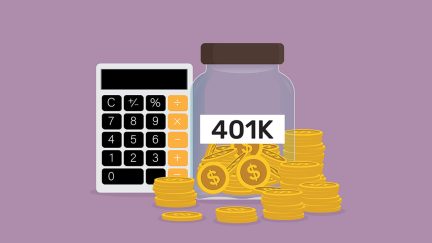For more stories like this, sign up for the PLANSPONSOR NEWSDash daily newsletter.
Few Retirees Receiving Income from the Three-Legged Stool
Only 6.8% receive income through Social Security, a defined benefit (DB) plan and a defined contribution (DC) plan, the NIRS found.
The National Institute on Retirement Security (NIRS) issued a report examining the sources of retirement income for older Americans—finding that while many Americans rely on Social Security throughout retirement, only some are receiving the benefit.
According to the report, 40% of older American retirees rely only on Social Security income in retirement, while only 6.8% receive income through Social Security, a defined benefit (DB) plan and a defined contribution (DC) plan. The report found roughly the same number of older Americans will receive income from DB plans, as from DC plans. However, this is likely to change, as the American workforce steers away from pensions.
“Future private-sector workers today have less access to defined benefit pensions, and so when they reach retirement age, they’re less likely to have any income from a DB plan,” stated Tyler Bond, NIRS manager of research, in a webinar about the report.
The report also emphasized key demographics and its relationship to retirement income. For example, unmarried older men and women receive retirement income from a combination of Social Security and DB and DC plans, but older unmarried men will consistently have higher incomes than unmarried women, an unsurprising detail considering the ongoing gender pay gap. These two groups tended to have smaller retirement incomes than married men and women, as multiple people in a household receive more income.
Additionally, the report found that both race and educational attainment have strong roles in establishing retirement income. Older white Americans received considerably more in Social Security income and total retirement income—at $23,292 for a median total retirement income figure and $14,760 in median Social Security amount. Older black Americans received a median total retirement income of $16,863 and a median Social Security Income figure of $13,320. Hispanics had the lowest median retirement income at $13,560, and the smallest Social Security income at $12,720—albeit having the highest percentage of those receiving Social Security benefits (45.9%). Almost 40% of white people are receiving these benefits, while 44.8% of black people are.
“The percentage is slightly higher for black people and Hispanics who are only receiving Social Security income in retirement, but you see that the median amounts are much closer together,” said Bond.
The report says those with a college degree will typically have significantly higher retirement incomes than those with only a high school education. “College graduates are more likely to have income from all three sources than those with just some college or those with only a high school education,” explained Bond.
The report also notes how sources of retirement income affect poverty status. For example, people receiving income from DB plans were found to have much greater poverty than those receiving income from DC plans. “One reason for this is that recipients of defined contribution income tend to have significantly higher net worth than recipients of defined benefit income,” said Bond.
The report concludes by stating that Social Security expansion can assist policymakers fighting elder poverty.

